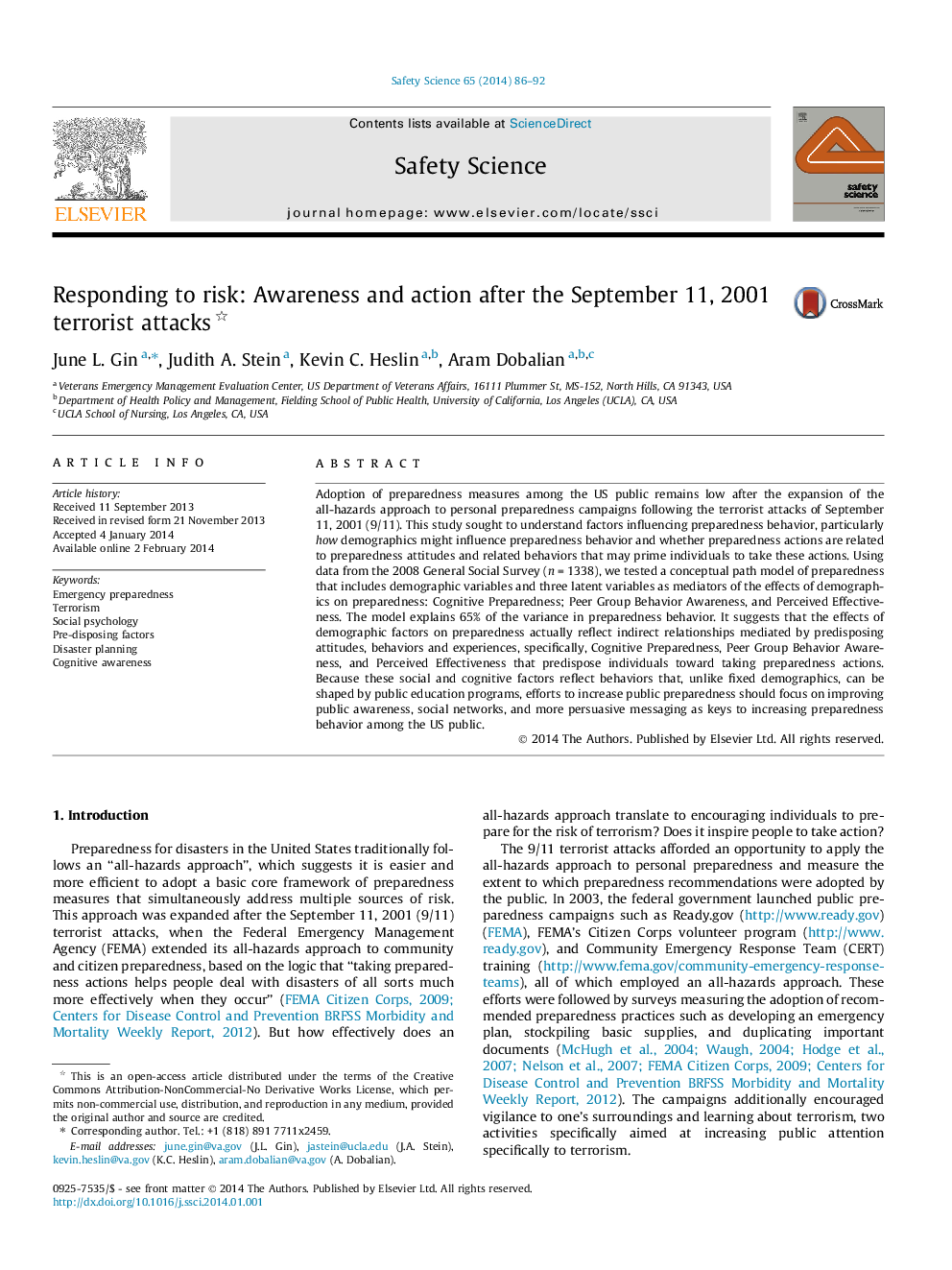| Article ID | Journal | Published Year | Pages | File Type |
|---|---|---|---|---|
| 6976328 | Safety Science | 2014 | 7 Pages |
Abstract
Adoption of preparedness measures among the US public remains low after the expansion of the all-hazards approach to personal preparedness campaigns following the terrorist attacks of September 11, 2001 (9/11). This study sought to understand factors influencing preparedness behavior, particularly how demographics might influence preparedness behavior and whether preparedness actions are related to preparedness attitudes and related behaviors that may prime individuals to take these actions. Using data from the 2008 General Social Survey (n = 1338), we tested a conceptual path model of preparedness that includes demographic variables and three latent variables as mediators of the effects of demographics on preparedness: Cognitive Preparedness; Peer Group Behavior Awareness, and Perceived Effectiveness. The model explains 65% of the variance in preparedness behavior. It suggests that the effects of demographic factors on preparedness actually reflect indirect relationships mediated by predisposing attitudes, behaviors and experiences, specifically, Cognitive Preparedness, Peer Group Behavior Awareness, and Perceived Effectiveness that predispose individuals toward taking preparedness actions. Because these social and cognitive factors reflect behaviors that, unlike fixed demographics, can be shaped by public education programs, efforts to increase public preparedness should focus on improving public awareness, social networks, and more persuasive messaging as keys to increasing preparedness behavior among the US public.
Related Topics
Physical Sciences and Engineering
Chemical Engineering
Chemical Health and Safety
Authors
June L. Gin, Judith A. Stein, Kevin C. Heslin, Aram Dobalian,
